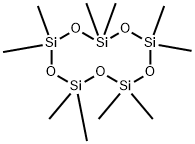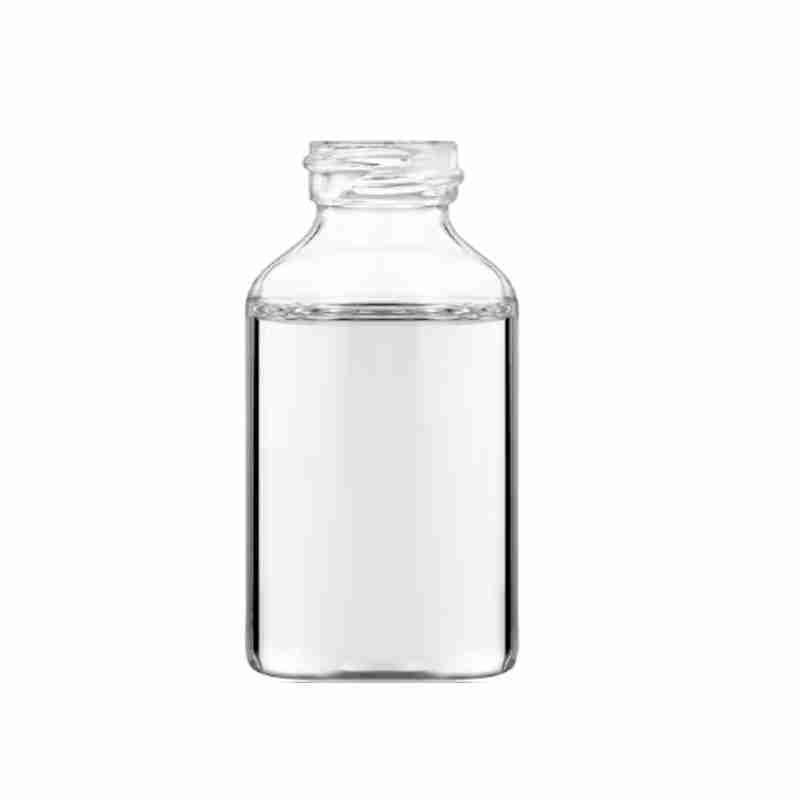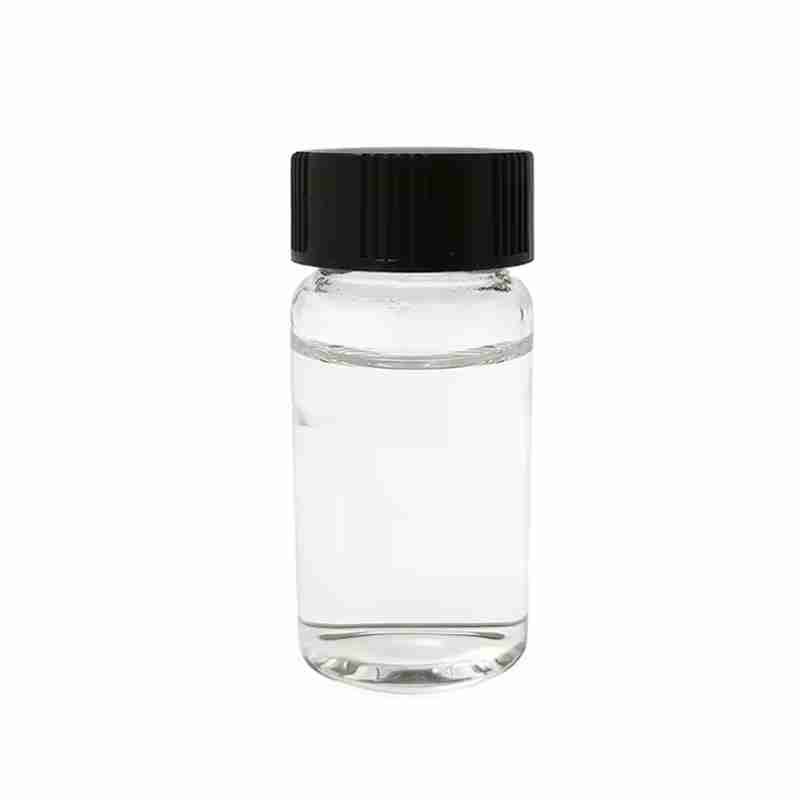Decamethylcyclopentasiloxane CAS #541-02-6
Decamethylcyclopentasiloxane (D 5) is a silicone compound with the molecular formula of [(CH 3) 2SiO] 5. It is a colorless and tasteless liquid with slight volatility.
Cyclopentasiloxane CAS No. 541-02-6, chemical formula C10H30O5Si5, molecular weight 370.77000, Chinese alias decamethylcyclopentasiloxane, liquid, boiling point 90 ??C10 mm Hg(lit.), flash point 162 ??F, density 0.958 g/mL at 25 ??C(lit.), refractive index n20/D 1.396(lit.). Decamethylcyclopentasiloxane (cyclopentasiloxane) is a colorless, odorless, volatile liquid cyclic siloxane, safe and environmentally friendly, and has been widely used in health and beauty products , such as deodorants, antiperspirants, cosmetics, shampoos, body lotions, etc. Good compatibility with alcohol and most other cosmetic solvents.
发送询盘
Decamethylcyclopentasiloxane CAS #541-02-6
| Decamethylcyclopentasiloxane Basic information |
| Product Name: | Decamethylcyclopentasiloxane |
| Synonyms: | CD3770;cyclicdimethylsiloxanepentamer;D3770;siliconsf1202;vs7158;CYCLIC PENTAMER-D5;DECAMETHYLCYCLOPENTASILOXANE;Decamethylcyclopentasiloxane (cyclic monomer)Cyclic Pentamer-D5 |
| CAS: | 541-02-6 |
| MF: | C10H30O5Si5 |
| MW: | 370.77 |
| EINECS: | 208-764-9 |
| Product Categories: | Organometallic Reagents;Organosilicon;Si (Classes of Silicon Compounds);Si-O Compounds;Heterocycles;Intermediates & Fine Chemicals;Pharmaceuticals;Organics;Silicone Series;Siloxanes;541-02-6 |
| Mol File: | 541-02-6.mol |
 |
|
| Decamethylcyclopentasiloxane Chemical Properties |
| Melting point | -44??C |
| Boiling point | 90 ??C/10 mmHg (lit.) |
| density | 0.958 g/mL at 25 ??C (lit.) |
| vapor pressure | 33.2Pa at 25?? |
| refractive index | n20/D?1.396(lit.) |
| Fp | 162???F |
| storage temp. | 2-8??C |
| solubility | <0.0001g/l (calculated) |
| form | Liquid |
| color | Colorless |
| Specific Gravity | 0.959 |
| explosive limit | 0.52-7%(V) |
| Water Solubility | Immiscible with water. |
| Hydrolytic Sensitivity | 1: no significant reaction with aqueous systems |
| Merck | 14,2848 |
| BRN | 1800166 |
| Dielectric constant | 2.5??20?棩 |
| Stability: | Stable. Incompatible with strong oxidizing agents. |
| InChIKey | XMSXQFUHVRWGNA-UHFFFAOYSA-N |
| LogP | 8.07 at 24.6?? |
| CAS DataBase Reference | 541-02-6(CAS DataBase Reference) |
| NIST Chemistry Reference | Decamethylcyclopentasiloxane(541-02-6) |
| EPA Substance Registry System | Decamethylcyclopentasiloxane (541-02-6) |
- 2
- 2-diallylpent-4-en-1-amine
- 4
- 95-16-9
- Ammonium sulfamate
- Benzothiazole
- cas:67889-00-3ح2
- cas:83524-75-8 | pigment black 32
- cas:928836-00-4 | 2
- cas:932745-70-5 | 4
- Chemical Minerals
- Coconut diethanolamide
- Daily Chemicals
- discount
- for sale
- General pvc resin
- hexyl D-glucoside
- in stock
- Lauramidopropyl betaine
- LAURIC ACID MONOETHANOLAMIDE
- Petroleum Additives
- Plasticiser
- Ploymers
- price
- PVC
- quotation
- Raw Materal
- Remove term: Petroleum Additives Petroleum Additive
- SODIUM ETHYL 2-SULFOLAURATE
Related Products
Benzothiazoles are a class of chemical compounds characterized by a fused benzene and thiazole ring. They exhibit a broad spectrum of applications, particularly as antioxidants in rubber and plastic industries, enhancing product longevity and performance. Additionally, benzothiazoles serve as key intermediates in the synthesis of pharmaceuticals, contributing to the development of life-saving drugs. Recognized for their stability and reactivity, these compounds are integral to advancing material science and healthcare solutions.
1-Octanol, also known as Capryl alcohol or n-Octanol, is a clear, colorless liquid with a characteristic waxy odor. It is an alcohol with eight carbon atoms in its chain, making it a part of the aliphatic alcohol family. This compound is poorly soluble in water but is miscible with ethanol, diethyl ether, and chloroform . It has a melting point of approximately -15??C and a boiling point of around 196??C . 1-Octanol is used in the production of esters, plasticizers, and as a solvent or intermediate in the synthesis of various organic compounds. It also finds application in the fragrance industry as a fixative in perfumes and can be used in the formulation of flavor and scent compositions . It is important to note that 1-Octanol is flammable and should be handled with care, storing it away from sources of ignition and heat .
Chemical Name: Arabic gum
CAS No.: 9000-01-5
Appearance: powder
Chemical Name: 3-Hydroxybutyric acid
CAS No.: 625-71-8
Molecular Formula: C4H8O3
Molecular Weight: 104.1
Appearance: White powder
Tetraacetylethylenediamine is a fully acetylated derivative of ethylenediamine, offering a high reactivity as an intermediate in organic synthesis. Its unique structure makes it a critical component in the production of specialty chemicals and pharmaceuticals, ensuring a wide range of applications in the chemical industry.
Chemical Name: o-Xylene
Synonyms: 1,2-Dimethylbenzene; ortho-xylene
CAS No.: 95-47-6
Molecular Formula: C8H10
Molecular Weight: 106.17
Chemical Name: 1,1,2,2-Tetrachloroethane
Other Name: Tetrachlorethane
CAS No.: 79-34-5
Molecular Formula: C2H2Cl4
Molecular Weight: 167.85
Appearance: Liquid
Silicone oil, known for its chemical designation as dimethicone or polydimethylsiloxane, is a synthetic polymer with a backbone of alternating silicon and oxygen atoms, creating a highly versatile and stable compound. It is renowned for its exceptional lubricating properties, heat resistance, and non-toxic nature, making it a staple in various industries, including cosmetics, automotive, and aerospace.
This hydrophobic, non-volatile oil is valued for its ability to provide a smooth, non-greasy feel and to form stable emulsions with other ingredients. In personal care products, silicone oil is used to impart a silky texture, reduce friction on the skin, and create a protective barrier against environmental stressors without clogging pores.
Silicone oil’s chemical inertness and resistance to oxidation contribute to its long shelf life and stability in formulations. It is also appreciated for its compatibility with a wide range of substances, allowing for the creation of multifunctional products.
In summary, silicone oil is a reliable and multifaceted ingredient, offering a combination of performance, safety, and sensory benefits. Its use in a variety of applications reflects its versatility and enduring appeal in the marketplace.
Chemical Name: Dehydrocholic acid
Synonyms: Acide dehydrocholique; Triketocholanic acid
CAS No.: 81-23-2
Molecular Formula: C24H34O5
Molecular Weight: 402.53
Appearance: Powder
Chemical Name: Zinc citrate
Synonyms: Zinc citrate trihydrate
CAS No.: 546-46-3
Molecular Formula: C6H8O7Zn
Molecular Weight: 257.5
Appearance: White powder
N,N-Dimethylaniline is an organic compound with amine and methyl groups attached to a benzene ring. It is a colorless liquid with a characteristic amine odor. This compound is primarily used as a chemical intermediate in the synthesis of dyes, pigments, and polymers. Its reactivity makes it a valuable building block in the production of various organic compounds, particularly in the pharmaceutical and chemical industries.
Chemical Name: Quercetin-3-O-sophoroside
CAS No.: 18609-17-1
Molecular Formula: C27H30O17
Molecular Weight: 626.52


















